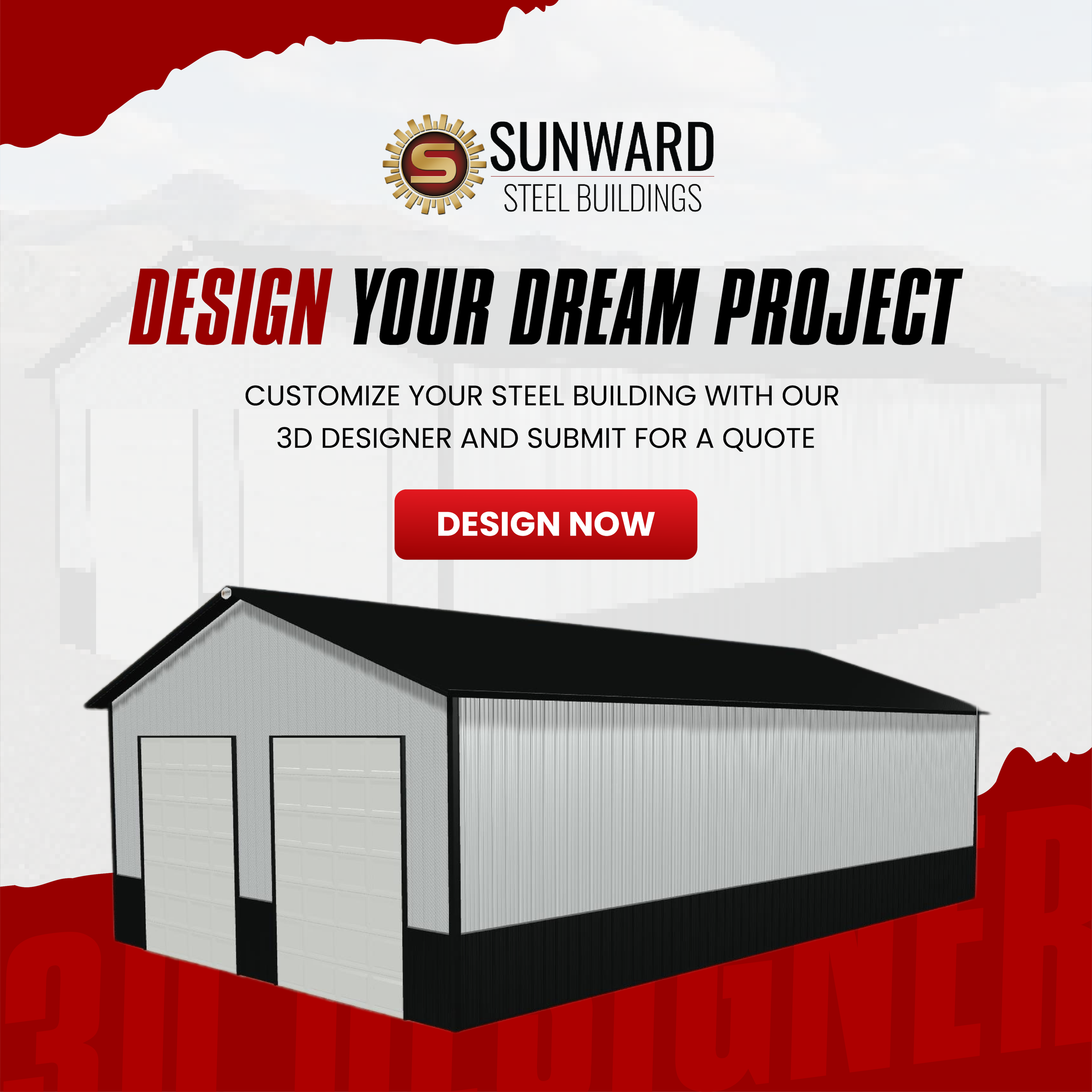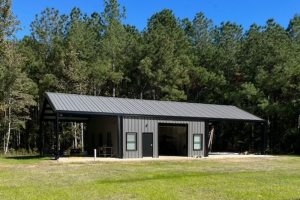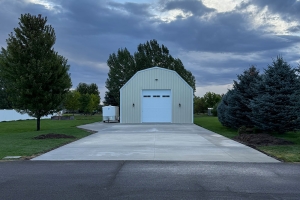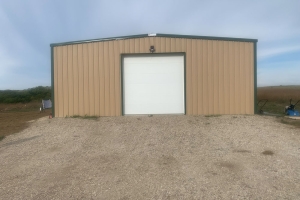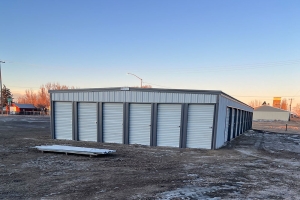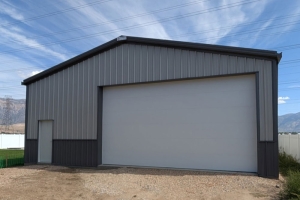Building A Sustainable House With Purpose And Precision
October 31, 2025 | Steel Home
Sustainable building has never been more popular. With rising energy costs, growing environmental awareness, and advancements in eco-friendly materials, more people are opting to build homes that are not only energy-efficient but also enduring.
But true sustainability isn’t just about going green—it’s about building with intention. A truly sustainable home highlights the importance of purposeful design, environmental responsibility, and modern construction methods. From the structural frame to the final finish, every decision plays a role in reducing impact, conserving resources, and creating lasting value.
When done right, building sustainably isn’t a compromise—it’s a commitment to living better, smarter, and more responsibly for generations to come.
What It Means To Build A Sustainable Home Today
Sustainable homebuilding is about more than just eco-conscious choices—it’s a holistic approach that balances environmental care with everyday practicality. At its core, it’s about designing a home that works smarter, lasts longer, and supports a healthier way of living.
Today’s sustainable homes are designed to minimize waste and resource consumption throughout their entire lifecycle. This process begins with selecting materials that require less energy to produce and culminates in designs that reduce ongoing maintenance, water usage, and emissions.
Comfort is also a major focus. Sustainable homes often feature improved air quality, natural temperature regulation, and noise reduction—all of which contribute to a healthier, more enjoyable indoor environment.
For homeowners, sustainability brings real financial benefits. Efficient insulation, modern building envelopes, and advanced systems lead to lower heating and cooling costs. Plus, long-lasting construction materials reduce the expense of repairs and replacements over time.
Modern sustainability is not a single choice—it’s a series of smart decisions that work together to reduce impact and add lasting value. Whether you’re motivated by performance, budget, or the planet, sustainable homebuilding helps you achieve all three without compromise.
Why Steel Is The Top Choice For Eco-Friendly Homebuilding
When it comes to sustainable construction, steel stands out as one of the most environmentally responsible materials available. It’s strong, long-lasting, and endlessly recyclable—making it a smart investment for homeowners who want to build with both the planet and their future in mind.
Steel buildings offer a level of precision and efficiency that’s hard to match with traditional materials. Steel supports eco-conscious homebuilding at every stage of the process in the following ways:
- Reduces Waste During Construction: Steel components are pre-engineered and pre-cut, resulting in significantly less on-site waste compared to wood framing. Fewer mistakes and excess materials help keep the job clean and efficient.
- Boosts Energy Efficiency And Sustainability: Steel structures pair easily with high-performance insulation systems and cool roofing materials, helping to stabilize indoor temperatures and reduce heating and cooling demands.
- Offers Long-Term Strength And Durability: Steel doesn’t rot, warp, or attract pests, and it holds strong against harsh weather and the passage of time. That kind of reliability reduces the need for repairs and material replacements for decades.
- Designed For Flexibility And Future Growth: Whether you’re planning an expansion or want to adapt your space later, steel makes it easy. Clear-span designs and modular components give you flexibility without compromise.
- Speed of Construction: With prefabricated parts and simplified assembly, steel buildings go up faster than traditional homes. That means fewer delays, lower labor costs, and less environmental disruption.
Planning Made Easy With Sustainable Building Practices
Creating a sustainable steel home starts with a solid plan, and the right approach can make the entire process smooth, efficient, and rewarding. With thoughtful preparation, you can ensure that every part of your build supports both your lifestyle and long-term environmental goals.
Here’s a step-by-step overview to help you plan your eco-friendly steel home with confidence:
Map Out The Structure And Building Approach
Choosing the right site is a foundational step in sustainable homebuilding. Look for land that supports passive solar design—ideally with southern exposure, minimal obstructions, and natural shading options. This allows your home to take advantage of sunlight for heating in winter and cooling in summer, reducing energy use year-round.
Once the site is selected, it’s time to align your construction timeline with the unique advantages of steel building systems. Because pre-manufactured steel components are pre-engineered and fabricated off-site, the erection process is faster and more predictable. This allows you to plan each stage, from foundation work to final detailing, with fewer delays, less waste, and a more streamlined workflow.
Design A Layout That Supports Sustainability
An innovative layout does more than organize your space—it helps your home perform better year-round. Here’s how thoughtful design choices improve efficiency and comfort:
- Maximize Natural Lighting: Position high-traffic rooms on the south-facing side and utilize large windows to capture daylight and passive heat, thereby reducing electricity consumption.
- Zone Spaces Strategically: Group rooms by function (such as bedrooms together or living areas together) to manage heating and cooling more efficiently.
- Enhance Airflow: Utilize open floor plans, high ceilings, and cross-ventilation to minimize the need for mechanical cooling and enhance indoor air quality.
- Support High-Performance Insulation: Design your layout to align with continuous insulation zones, ensuring fewer thermal breaks and better energy retention throughout the home.
With these strategies in place, your layout becomes a vital tool in building a home that’s both comfortable and energy-conscious.
Estimate Costs With Sustainability In Mind
Building a sustainable home means thinking beyond initial costs and focusing on long-term value. While features like high-performance insulation or renewable energy systems may incur upfront expenses, they often deliver significant savings through lower energy bills, tax incentives, and reduced maintenance costs.
Material choices also play a role. Durable options, such as steel framing and metal roofing, minimize repair and replacement costs over time. When you align your budget with your sustainability goals early in the planning process, you make smarter investments that pay off in both performance and peace of mind.
Assess the Full Lifecycle of Your Home
Building sustainably means looking beyond the initial construction and considering how your home will perform for decades to come. Here’s what to evaluate to ensure long-term sustainability:
- Durability: Select materials that withstand weather, pests, and wear. Steel is exceptionally resilient, helping reduce the need for frequent repairs or replacements.
- Maintenance Needs: Low-maintenance homes use fewer resources over time. Steel framing and metal roofing minimize upkeep, saving time and reducing material waste.
- Recyclability: Steel is 100% recyclable without losing strength. At the end of its life, your home’s structure can be reused rather than ending up in a landfill.
- Cost Over Time: While sustainable materials may cost more upfront, they often pay off through lower utility bills, fewer repairs, and a longer service life.
By assessing each of these factors, you can build a home that’s not only efficient and comfortable but truly built to last.
Compare Steel Framing Options
When planning your steel home, it’s essential to understand the framing options available so you can choose the best fit for your needs.
Cold-formed steel is a lightweight, precise option commonly used in residential construction. It’s created by bending steel sheets at room temperature, making it easier to transport and faster to install. In contrast, hot-rolled steel is heavier and more robust, making it ideal for larger or more industrial applications that require higher load-bearing strength.
You should also consider whether pre-engineered or custom framing is the right approach. Pre-engineered systems are fabricated off-site using standard designs, which speeds up construction and reduces waste. Custom framing, on the other hand, allows for complete design flexibility—perfect for unique layouts or site-specific requirements—but typically comes with a longer lead time and higher cost.
Finally, there’s the choice between modular and site-built construction. Modular steel buildings are preassembled in sections and then installed on-site, minimizing labor time and on-site disruption. Site-built framing is constructed entirely on location, offering more freedom for customization and adaptation to complex terrain. However, it generally requires a longer timeline.
Steel Home Pitfalls That Can Hurt Sustainability
Steel is an excellent foundation for sustainable homebuilding, but achieving true efficiency and resilience means pairing it with the proper planning, materials, and systems. From solar integration and water-saving technology to battery storage and energy monitoring, modern systems can elevate a steel home’s performance. Still, there are key missteps that can undermine your long-term goals if not addressed early.
Here are some of the more common pitfalls to watch out for when using sustainable building practices:
- Skipping Site Orientation Planning: Ignoring the sun’s path and prevailing winds can lead to higher energy use. Smart orientation supports passive heating, cooling, and daylighting.
- Underestimating Insulation Needs: Steel conducts heat quickly, so inadequate insulation planning can result in significant energy loss. Invest in high-performance insulation to maintain indoor comfort and efficiency.
- Neglecting Proper Ventilation: A tightly sealed home without adequate airflow can trap moisture and reduce air quality. Include mechanical or passive ventilation strategies from the start.
- Overlooking Long-Term Flexibility: Sustainable homes should adapt to changing needs. Design your steel structure with future expansion, new tech, or layout changes in mind.
- Using Unsustainable Interior Finishes: Non-recyclable or high-VOC interior materials can undercut sustainability. Opt for recycled, low-emission, and durable finishes wherever possible.
- Failing To Work With Experienced Professionals: Sustainability requires expertise. Partnering with experienced engineers, architects, and steel building manufacturers ensures your home meets performance and environmental goals.
Design Choices That Make Your Home Greener
Sustainability starts with smart design. The way your home is laid out, finished, and equipped can significantly impact its energy use, comfort, and environmental footprint. Whether you’re building from scratch or refining your plans, these practical strategies can help you create a greener, more efficient home from the ground up.
Consider Solar Passive Design
Solar passive design is one of the simplest and most effective ways to reduce your home’s energy consumption. By carefully positioning your home and planning window placement, shading, and thermal mass, you can harness the sun’s natural energy to heat and cool your space year-round, without relying heavily on mechanical systems.
South-facing windows allow sunlight to warm living areas during winter, while properly designed overhangs block excess heat in summer. Thermal mass materials, such as polished concrete or stone, absorb heat during the day and release it slowly at night, helping to maintain comfortable indoor temperatures.
Use Eco-friendly Paints And Building Materials
The materials you choose for your home’s interior and exterior finishes play a major role in both sustainability and indoor air quality. Many conventional products contain volatile organic compounds (VOCs) that can release harmful gases into your living space over time. Choosing low-VOC or zero-VOC paints, stains, and sealants helps create a healthier environment from day one.
In addition to paints, opt for recycled, renewable, or responsibly sourced building materials whenever possible. Bamboo flooring, reclaimed wood, recycled metal, and natural fiber insulation all offer durability with a lower environmental footprint.
Buy Energy-Saving Appliances
Energy-efficient appliances are a key part of any sustainable home. They use less electricity and water while delivering the same—or better—performance compared to standard models. Over time, this reduces your utility bills and helps lower your home’s overall carbon footprint.
Look for appliances with the ENERGY STAR® label or similar certifications, which indicate they meet strict efficiency standards. From refrigerators and dishwashers to HVAC systems and water heaters, modern energy-saving models are designed to work smarter, not harder.
Minimize Waste With Compost
Composting is a simple yet powerful way to reduce household waste and support a more sustainable lifestyle. Instead of sending food scraps and yard waste to the landfill, composting transforms them into nutrient-rich soil that can be used for gardening or landscaping.
By separating organic waste from your trash, you help reduce methane emissions from landfills and lower the overall volume of waste your home produces. Whether you choose a backyard compost bin or a countertop system, the process is easy to manage and highly effective.
Plant A Kitchen Garden
A kitchen garden is a practical and rewarding way to enhance your home’s sustainability. Growing your own herbs, vegetables, and fruits reduces your reliance on store-bought produce, cuts down packaging waste, and lowers the carbon footprint associated with food transport.
You don’t need a large space to get started. Raised beds, containers, or even vertical planters can yield fresh, organic ingredients right outside your door. Plus, using compost from your household waste adds natural nutrients to your soil, creating a closed-loop system.
Install Complete Home Filtration
Clean water and air are essential for a healthy, sustainable home. Installing a whole-house filtration system ensures that every tap and vent delivers purified water and air, improving both environmental quality and daily comfort.
Water filtration systems can reduce contaminants such as chlorine, heavy metals, and microplastics, thereby protecting your plumbing, appliances, and health. Meanwhile, whole-home air purifiers help remove dust, allergens, and airborne pollutants, especially important in well-sealed, energy-efficient homes.
Why Eco-Minded Homeowners Choose Sunward Steel
When you’re building a sustainable home, choosing the right materials—and the right partner—makes all the difference. That’s why so many eco-conscious homeowners turn to Sunward Steel. As a trusted provider of pre-engineered steel buildings since 1972, Sunward offers environmentally responsible building solutions that combine strength, flexibility, and long-term performance.
Our building kits are designed to support your green goals from the ground up:
- Recycled And Recyclable Steel: Made with at least 65% recycled content and fully recyclable, reducing embodied carbon and qualifying for up to 5 LEED credits.
- Energy Efficiency: Optimized insulation, cool roof coatings, and high-performance HVAC systems help minimize thermal bridging and air leakage. Up to 18 LEED credits available for energy performance.
- Solar And Renewable Ready: Standing-seam metal roofs are ideal for solar PV and thermal systems, with lifespans that match your solar investment. Earn up to 3 LEED credits for on-site renewable energy.
- Water Conservation: Rainwater harvesting systems reduce municipal water use both indoors and outdoors, contributing up to 8 LEED credits.
- Waste Reduction: Off-site fabrication reduces job-site waste by over 50%, supporting cleaner construction and 2 LEED credits for waste management.
- Indoor Air Quality And Comfort: Low-VOC finishes, natural daylighting, and design flexibility contribute to a healthier home environment and up to 6 LEED credits for indoor environmental quality.
Whether you’re designing a primary residence or an off-grid retreat, Sunward gives you the freedom to build efficiently and responsibly. With customizable kits, transparent EPDs, and a decades-long commitment to sustainability, we’re proud to support homeowners who want to build better.
Design Smarter For Tomorrow With Sunward Steel
Building a sustainable home isn’t just a trend—it’s a long-term investment in comfort, efficiency, and environmental responsibility. When you choose steel, you’re choosing a material that’s built to endure, adaptable to your future needs, and compatible with the technologies that will shape tomorrow’s homes.
At Sunward Steel, we believe that smart design begins with strong, sustainable materials and ends in a home that lasts for generations. Our pre-engineered steel buildings are made to reduce environmental impact while maximizing performance. Whether you’re focused on reducing your carbon footprint, lowering long-term costs, or simply creating a healthier living space, we’re here to help you build smarter—today and for the future.
Start your eco-smart home journey with Sunward Steel’s custom kits built for comfort, energy efficiency, and long-term value. Sustainability | Sunward Steel Buildings

